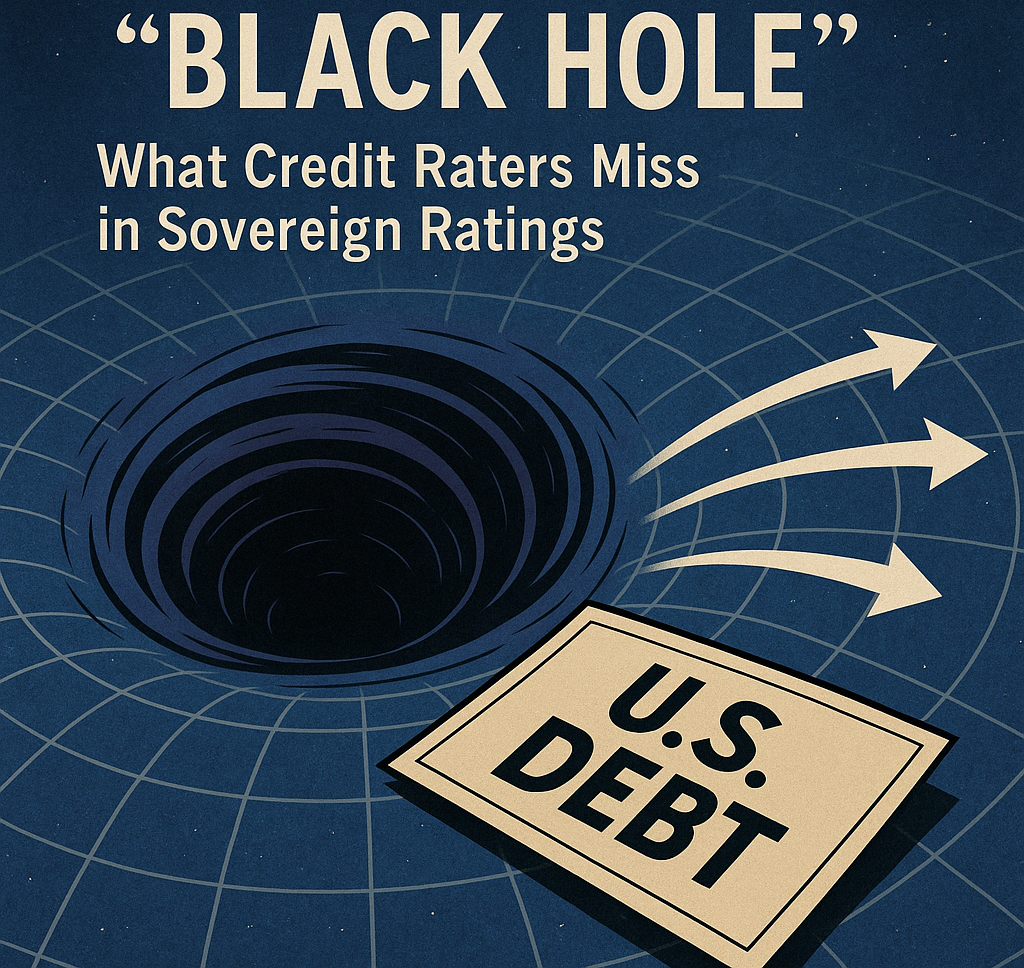What Credit Raters Miss in Sovereign Ratings
Credit rating agencies have downgraded U.S. debt, but are they measuring the right thing? Using Structural Valuation Analysis (SVA), Ross Healy explores sovereign debt, purchasing power, and the hidden “black hole” condition in America’s balance sheet.

Credit rating agencies like Moody’s and S&P recently downgraded U.S. sovereign debt, sparking sharp criticism from political leaders. But this raises a deeper question: What exactly should credit raters be measuring?
Structural Valuation Analysis (SVA) offers a framework to evaluate sovereign debt beyond headline ratings. Traditionally, credit agencies focus on a nation’s ability to raise more debt—an approach aligned with Modern Monetary Theory (MMT), which assumes debt is risk-free as long as borrowing continues. But this ignores a critical second measure: repayment in equivalent purchasing power.
The Marginal Productivity of Debt
By analyzing the debt-to-GDP ratio, SVA identifies a critical threshold. When debt reaches approximately $3.50 for every $1.00 of GDP (a ratio of 0.289), the marginal productivity of debt falls to zero. Beyond this “black hole condition,” additional borrowing no longer grows the economy—it actively erodes it.
The result? Declining currency value, rising inflation, and diminishing repayment value in real terms. Gold prices often serve as a real-time referendum on this erosion, reflecting waning confidence in sovereign debt’s purchasing power.
What Rating Should the U.S. Receive?
If U.S. debt continues on its current trajectory, the true risk is not default but inflation-driven devaluation. Credit raters face a difficult question: Should U.S. debt still be considered “investment grade” if the dollars repaid buy less every year?
This is the central challenge for sovereign debt ratings in the modern era—one that traditional frameworks may be ill-equipped to answer.
📺 Watch the full breakdown here: https://youtu.be/B3L5_xixMmk
.png)







